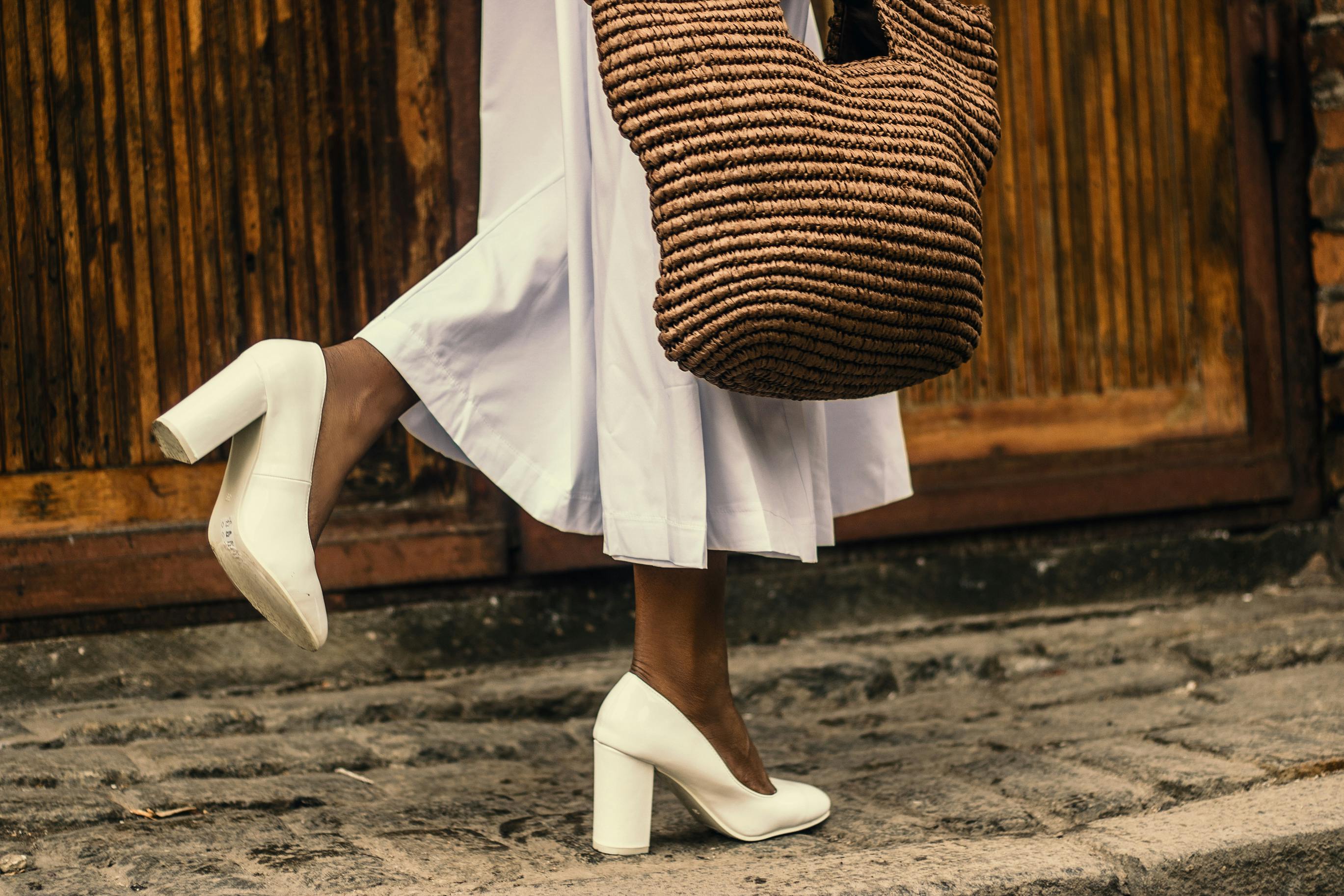Why Is My Toe Numb After Wearing Heels

Have you ever worn high heels only to find out that your toe was numb afterwards? You’re not alone! This is a common issue for those who wear high heels and can be caused by a few different things. In this article, we will discuss why your toe might be numb after wearing heels and what you can do to prevent it from happening again.Wearing high heels can cause your toes to become numb due to the pressure and tension placed on the front of the foot. The shoes can press down on the toes, squeezing them against the end of the shoe. This puts pressure on nerves and blood vessels, reducing circulation in the toes and leading to numbness. Too-tight shoes can also constrict the nerve pathways in the foot, leading to tingling or numbness in the toes. Wearing high heels for extended periods of time can exacerbate these issues as it increases the amount of time that pressure is placed on your feet.
Prevent Toes from Becoming Numb After Wearing Heels
Wearing heels can be tricky since it puts pressure on your feet and can cause your toes to become numb over time. Fortunately, there are some simple steps you can take to prevent this from happening. The first step is to make sure you wear shoes that fit properly. Shoes should fit snugly but not be too tight as this can limit circulation and cause numbness. It’s also important to choose shoes with adequate cushioning and support, as this will help reduce the pressure on your toes and feet.
Another way to prevent toe numbness is by stretching your feet before and after wearing heels. Simple exercises such as rolling your feet over a tennis ball or stretching your toes can help reduce tension in the muscles and improve circulation. Additionally, taking breaks throughout the day to give your feet a rest is essential for preventing numbness and discomfort caused by wearing high heels for long periods of time.
Finally, investing in quality shoes is an important part of preventing toe numbness after wearing heels. Quality shoes provide adequate cushioning and support which helps reduce pressure on the feet and toes, while also providing comfort throughout the day. Additionally, investing in quality shoes ensures that they will last longer, so you don’t have to replace them as often which saves money in the long run.
Are Numb Toes a Sign of a Serious Condition?
Numb toes can be a sign of an underlying medical condition and should always be checked out by your doctor. If you find that your toes are numb, it could be a sign of something serious such as diabetes, peripheral neuropathy, or even a stroke. The symptoms of numbness in the toes may also indicate other medical issues such as poor circulation or nerve damage. It is important to consult with your doctor to determine the exact cause of your numbness in the toes.
Your doctor will likely check for any signs of nerve damage or poor circulation in the feet and legs. They may also do blood tests to check for diabetes or any other medical conditions that could be causing the numbness. If an underlying medical condition is found, they will likely recommend treatment options to help manage the condition and reduce any symptoms associated with it. In some cases, medications may be prescribed to help improve blood flow and reduce inflammation in the area.
It is important to seek medical attention right away if you experience any numbness in the toes as this could be a sign of something serious. Your doctor will be able to determine what is causing your symptoms and provide you with appropriate treatments to help manage them. If left untreated, some conditions that cause numbness in the toes can lead to more serious health problems such as amputation or even death.
Are High Heels Bad for Your Feet?
High heels are often seen as a stylish and attractive addition to an outfit. However, they can also be bad for your feet if worn too often or for too long. Wearing high heels can cause a variety of foot problems, such as corns, bunions, arch and heel pain, hammertoes, and Morton’s neuroma. Prolonged wearing of high heels can also lead to weakened calf muscles and an unstable gait.
The higher the heel is on the shoe, the more pressure is placed on the ball of the foot. This extra pressure can result in calluses and blisters on the bottom of your feet. High heels also tend to make you walk differently than with flats or sneakers – you have to adjust your stride to accommodate the height of the heel. This can lead to various foot conditions such as plantar fasciitis – a condition that causes pain in the heel and arch area due to inflammation of the band of tissue that connects your heel bone to your toes.
In addition to physical foot conditions caused by wearing high heels, there are other factors to consider when it comes to their safety. For example, wearing high heels increases your risk for falls and ankle injuries due to their lack of stability. The higher you go in terms of heel height, the harder it is for you to balance properly while walking or standing.
Overall, while high heels are fashionable and attractive additions to any wardrobe, they should be worn sparingly in order to reduce your risk of developing painful foot conditions or suffering from falls or ankle injuries. If you do choose to wear them frequently or for extended periods of time, make sure that you take extra precautions such as wearing supportive insoles or orthotics in order to reduce strain on your feet and ankles.
Common Foot Problems Associated with Wearing High Heels
Wearing high heels can cause a variety of foot problems, ranging from minor aches and pains to serious medical conditions. Some of the most common issues associated with wearing high heels include bunions, hammertoes, nerve damage, and plantar fasciitis.
Bunions are one of the most common foot problems caused by wearing high heels. A bunion is an enlargement of the joint at the base of the big toe that causes pain and discomfort when walking. Bunions can be caused by wearing shoes that are too narrow or too tight, which puts extra pressure on the joint and can lead to deformity over time.
Another issue that can be caused by wearing high heels is hammertoes. Hammertoes occur when the toes bend or curl in an unnatural way, which can cause pain and make it difficult to walk. This condition is often caused by wearing shoes that are too tight or don’t fit properly, which puts extra pressure on the toes as they bend unnaturally to fit into the shoe.
High heeled shoes can also cause nerve damage in the feet. The nerves in the feet can become compressed if they are forced into tight-fitting shoes for extended periods of time. This compression can lead to numbness, tingling, and even pain in the feet as well as other parts of the body if left untreated for too long.
Lastly, wearing high heeled shoes can also cause plantar fasciitis. This condition occurs when the band of tissue that runs along the bottom of your foot becomes inflamed due to excessive strain or pressure put on it from wearing ill-fitting shoes or walking on hard surfaces for extended periods of time. Plantar fasciitis causes pain in your heel and arch area and makes it difficult to walk normally without discomfort or pain.

Reducing Pain and Discomfort of High Heels
Wearing high heels can be painful and uncomfortable, especially for those who are not used to them. Fortunately, there are several ways to reduce the pain and discomfort associated with wearing high heels.
The first step is to make sure you have the right size shoe. Shoes that are too small or too large can cause blisters and intense pain when walking or standing for long periods of time. It’s also important to choose shoes with a thicker sole as they will provide more cushioning and support than thinner soles.
Another way to reduce the pain of wearing high heels is to wear them in gradually. Start by wearing them for short periods of time, such as an hour or two each day, until you get used to them. You can also try different styles of high heels such as wedges or platforms that provide more stability than traditional stilettos.
It’s also important to invest in comfortable insoles that provide extra cushioning and support, particularly if you plan on wearing your heels for extended periods of time. Insoles with arch support can help reduce strain on the feet and ankles while providing additional comfort.
Finally, it’s important to take regular breaks from wearing your high heels whenever possible. Having a pair of comfortable flats or low-heeled shoes available can help give your feet a break from the pressure of high heels throughout the day. Taking time out to stretch your feet and legs can also help reduce any pain or discomfort associated with wearing high heels for long periods of time.
By following these simple tips, you can enjoy wearing your favorite high heels without having to suffer through unnecessary pain or discomfort!
Is It Safe to Wear High Heels Regularly?
High heels are a staple in most women’s wardrobes, but wearing them all the time can be hard on your feet and ankles. While they can add height and a certain level of sophistication to your look, long-term health issues can result from wearing high heels too often. The American Podiatric Medical Association warns that wearing high heels regularly can lead to ankle sprains, bunions, hammertoes, and other foot problems.
The main issue with wearing high heels regularly is that they can cause changes in the shape of your feet over time. Wearing them pushes your toes down into a narrow toe box which forces them into unnatural positions and causes pressure on the areas around the toes. This can lead to bunions and hammertoes as well as problems with your arches and plantar fascia.
In addition to physical foot problems, wearing high heels also affects how you walk. When you wear high heels, your gait is altered which can put extra stress on the muscles in your feet, ankles, knees and hips. This altered gait increases the risk of falls which can cause serious injury – especially as you get older.
If you love wearing high heels, it’s important to take precautions to keep yourself safe. Try not to wear them for more than four hours at a time and switch up the heel height throughout the week so that one pair isn’t always carrying all of your weight. Wearing shoes with low or no heel every other day will help reduce the strain on your feet from constantly being in high-heeled shoes. Additionally, make sure that any shoes you’re wearing have good arch support and cushioning so they don’t put too much strain on any one area of your foot.
Overall, it’s important to be mindful when it comes to wearing high heels regularly so that you don’t put yourself at risk for long-term foot problems or injury from falls due to an altered gait. Taking small measures such as switching up heel heights throughout the week or opting for low or no heel shoes every other day will help keep you healthy while still enjoying fashionable footwear choices.
Giving Your Feet Relief After Wearing Heels All Day
Wearing heels all day can be quite uncomfortable and painful, but there are some simple ways you can give your feet relief. The most important thing to do is to give your feet a break, so take off your shoes whenever possible and allow them to rest. If possible, change into a more comfortable pair of shoes or go barefoot for a while. You can also use a foot soak to help reduce swelling and pain. Add some Epsom salts or essential oils to warm water and soak your feet for at least 20 minutes. This will help relieve any tension in the muscles and joints of your feet.
Another way to reduce pain is to massage your feet. Use gentle circular motions with your fingertips or knuckles to apply pressure on any tender areas. This will help stimulate circulation and relax tense muscles. You can also use a foam roller or golf ball for deep tissue massage if needed. Additionally, try stretching exercises such as calf raises and ankle circles which will help improve flexibility in the area.
Finally, make sure you are wearing the right size of shoes for your feet type. Shoes that are too tight or too loose can cause discomfort throughout the day, so it’s important that they fit properly. Consider investing in supportive insoles that provide cushioning and arch support as well as heel lifts if needed. These can help reduce pressure on the heels as well as improve posture while standing or walking in heels throughout the day.

Conclusion
Wearing heels can be a great way to make a fashion statement, but they can also cause serious health issues if worn for too long. Numbness in the toes is one of the most common problems that can occur as a result of wearing heels too often. To prevent this problem, it is important to pay attention to how long you have been wearing the shoes and to take regular breaks from wearing them. Additionally, always opt for shoes with comfortable padding and arch support if possible, and consider switching to flat shoes on occasion.
As with any type of footwear, it is important to ensure that you are comfortable while wearing them and that your feet are not put into unnecessary strain or discomfort. By following these tips, you should be able to reduce your risk of developing numb toes after wearing heels.
